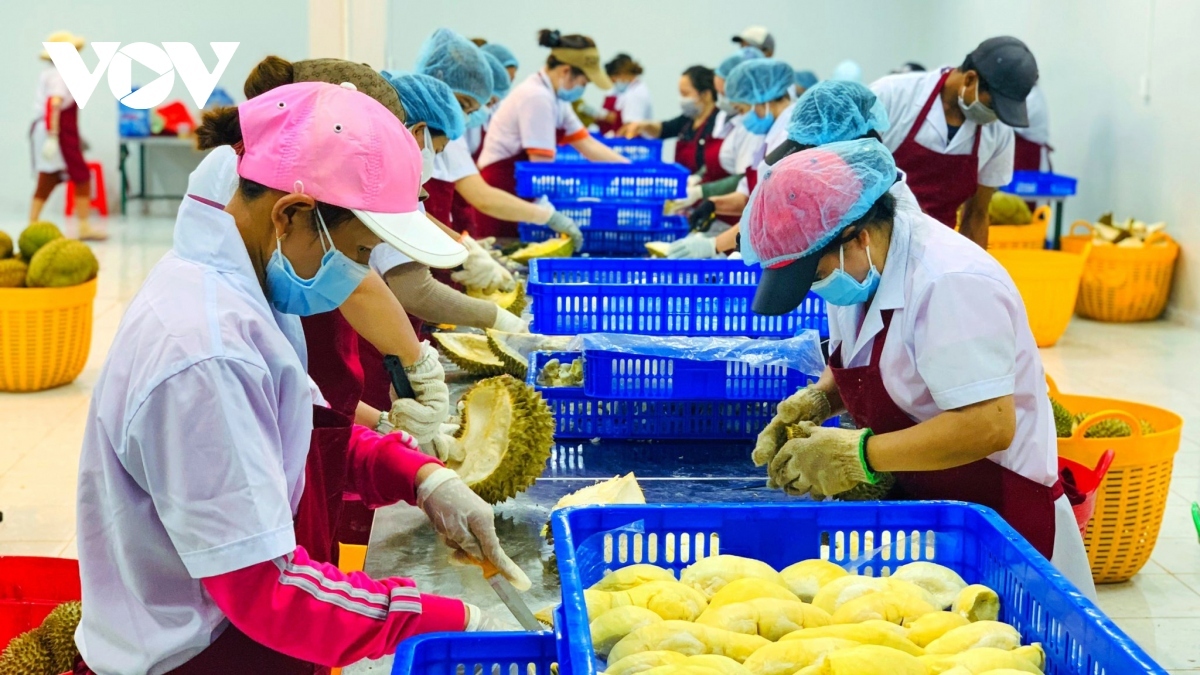Tough challenges ahead for Vietnamese exports in 2023
Despite recording double-digit growth in 2022, the export of commodities is expected to be confronted with various challenges this year both domestically and globally.

There remain challenges for vietnamese exports in 2023 due to global ucertaintees. (Illustrative image)
Vietnam raked in more than US$370 billion in exports last year, representing an annual rise of 10.6%. This year, it plans to raise the export value by 6% whilst continuing to maintain its export surplus as it has done over the past seven years.
Experts all agree that achieving this target is not easy due to a lack of orders starting in the fourth quarter of 2022, coupled with rising inflation that has forced consumers in key markets to tighten their belts. Garments and footwear are among the industries most vulnerable to the globally-shrinking market.
“Orders have decreased by about 30% compared to the same period every year due to the negative impact of global factors, especially the Russia-Ukraine conflict, which has much affected the export of commodities to the EU, one of Vietnam’s key export markets,” says Hoang Hong Thuy, director of Chien Thang Garment Company.
Furthermore, financial pressure has dealt a blow to the operations of export businesses. Besides having struggled to endure the impact of the COVID-19 pandemic over the past two years, most enterprises continue to face difficulties gaining access to financial sources for production as a consequence of high interest rate pressure, fluctuations in the foreign exchange market, and rising input material costs.
Firms are trying to make full use of tax preferences from new-generation free trade agreements that Vietnam has signed with partners, including the EU-Vietnam free trade agreement (EVFTA), the UK-Vietnam free trade agreement (UKVFTA), and the comprehensive and progressive agreement for trans-pacific partnership (CPTPP). However, these agreements set higher standards in terms of product quality, thereby forcing farm produce processors to work hard in order to meet all of the requirements.
Furthermore, as of January 1, all businesses wishing to export products to the EU are required to be granted a certificate of origin form EUR.1, as opposed to being selected for export under the form of generalised system of preferences (GSP) as was the case before.
“It is not only a story about the rule of origin, but a story about meeting the regulations on food safety and hygiene standards, labour standards as well as the requirements of the EU market for food products,” says Nguyen Cam Trang, director of the Import-Export Department under the Ministry of Industry and Trade.
“For example, for wood products, we must pay attention to the traceability of wood according to regulations. We have learnt valuable lessons related to the IUU yellow card for our seafood exported to the EU. Such issues must be given due care,” suggests Trang.

Businesses are required to improve product quality to meet the consumers' taste in new-generation FTA markets.
Meanwhile, Dr. Le Dang Doanh, a leading economic expert, points out that the EU, Japan, and the United States are not demanding markets, but should instead be viewed as ‘playing fields’ that force businesses to find ways to improve the quality of products in order to better cater to their consumers’ tastes. The fastest way for Vietnamese enterprises with limited economic potential to grow is to enter into joint ventures with foreign partners as a means of investing in technology to ensure their products are able to meet market requirements, according to the expert.
Another challenge for Vietnamese foreign trade in 2023 is that local businesses’ engagement in global supply chains remains limited. Exports still heavily rely on FDI companies, while the export capacity of domestic businesses, especially small and medium-sized ones, remains low, eventually fueling commercial infrastructure costs and reducing the overall competitiveness of the products.
To meet this year’s targets, the Ministry of Industry and Trade recommends that local businesses actively seek and diversify export markets, mainly in Southeast Asia and elsewhere in Asia. In addition, firms are required to diversify export products, with a particular focus on developing organic and environmentally-friendly products which serve niche markets with high added value.
The Ministry also requests that the Vietnam Trade Offices abroad also help out enterprises and craft associations to make full use of FTAs for the purpose of diversifying markets, supply chains, and import-export items. Another important task is to ramp up official exports, develop brands, and renew trade promotion to cash in on the local market of nearly 100 million consumers.
VOV
 Intensive actions of tax revenue to exceed in the year
Intensive actions of tax revenue to exceed in the year
 Businesses focus efforts on new development phase
Businesses focus efforts on new development phase
 High-Quality Human Resource Training Cooperation for Businesses
High-Quality Human Resource Training Cooperation for Businesses
 Visitors enjoy hundreds of images and artifacts at thematic exhibition “People's Armed Forces of Binh Duong province in fighting, building and defending the Fatherland”
Visitors enjoy hundreds of images and artifacts at thematic exhibition “People's Armed Forces of Binh Duong province in fighting, building and defending the Fatherland”
 Multiplying exemplary models of the "Excellent and Creative Labor" Emulation
Multiplying exemplary models of the "Excellent and Creative Labor" Emulation
 Logistics companies take advantage of opportunities to innovate and grow
Logistics companies take advantage of opportunities to innovate and grow
 Counterfeit, smuggled goods on e-commerce platforms: Current situation and solutions
Counterfeit, smuggled goods on e-commerce platforms: Current situation and solutions
 Coordination programs are guaranteed to be practical and effective
Coordination programs are guaranteed to be practical and effective
 ENTERPRISES LISTED IN THE GREEN BOOK: Role models on sustainable environmental protection
ENTERPRISES LISTED IN THE GREEN BOOK: Role models on sustainable environmental protection
 Binh Duong-Yamaguchi (Japan): Ten-year connection
Binh Duong-Yamaguchi (Japan): Ten-year connection




